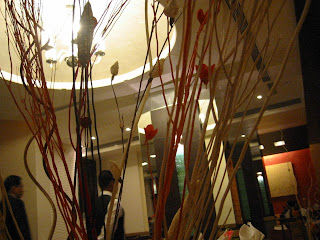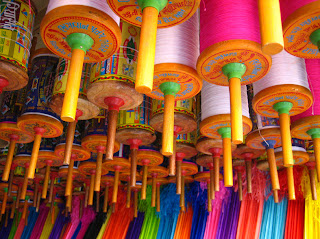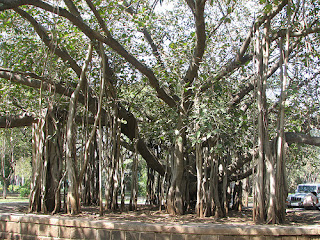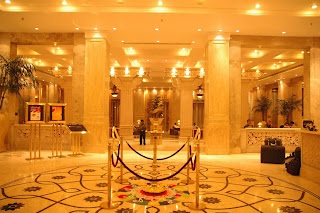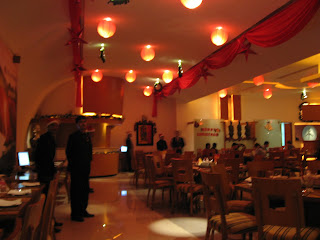 My flight touched down on a bleak, chilly morning in San Francisco. While San Francisco is always chilly and windy, this winter's been rather extreme. Even the hills near Palo Alto got some snow this month, causing much excitement at such an unusual event.
My flight touched down on a bleak, chilly morning in San Francisco. While San Francisco is always chilly and windy, this winter's been rather extreme. Even the hills near Palo Alto got some snow this month, causing much excitement at such an unusual event.I had chosen Singapore Air during this trip to the US. In Mumbai I had a few hours to spend at the Intercontinental Grand and their Baluchi restaurant. I will post the Baluchi experience separately.
 It was a relief to be boarded after being in the crowds in the departure area. Singapore Air is amazing: their flight attendants continue to be the most friendly, courteous, and ever-helpful. Armed with the knowledge of their new business-class cabin, I had chosen a window seat (1-2-1 configuration in which all seats are aisle seats, and the window seats are both aisle and window!).
It was a relief to be boarded after being in the crowds in the departure area. Singapore Air is amazing: their flight attendants continue to be the most friendly, courteous, and ever-helpful. Armed with the knowledge of their new business-class cabin, I had chosen a window seat (1-2-1 configuration in which all seats are aisle seats, and the window seats are both aisle and window!).I even watched a few movies during this flight: Rush Hour 3 (Jackie Chan is still so much fun to watch!), The Brave One (a new Jodie Foster movie with a vigilante theme), Resident Evil: Extinction (enjoyed this one - zombies and Milla Jovovich - lethal!), and Jhoom Barabar Jhoom (another Bollywood masala movie...Bobby Deol was particularly awful). During the brief stopover at Incheon airport, I had the most incredible ice-cream - it had pictachio with a hint of green-tea and cherries, which made the taste very exotic!
 During my first day in San Francisco, I had lunch at Osha but decided to stay put in my room after that. Room service turned out to pretty good: check out the Olive Pepper Chicken, roasted red potato, and baby squash I ordered.
During my first day in San Francisco, I had lunch at Osha but decided to stay put in my room after that. Room service turned out to pretty good: check out the Olive Pepper Chicken, roasted red potato, and baby squash I ordered.Finally, a break in the bad weather today and some welcome sunshine! Since my meetings had gotten over early, I strolled the streets near my hotel in downtown San Francisco.
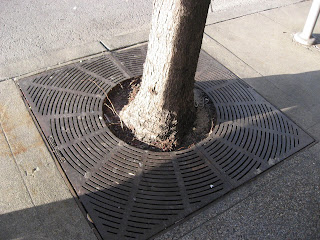 One of the things I always notice in the US is how nicely they build the pavement around trees. Notice the metal covering that allows the earth around the roots to 'breathe'?
One of the things I always notice in the US is how nicely they build the pavement around trees. Notice the metal covering that allows the earth around the roots to 'breathe'?Tonight, I dine at the Boulevard, a Michelin starred restaurant. But that's another post. Watch this space!



